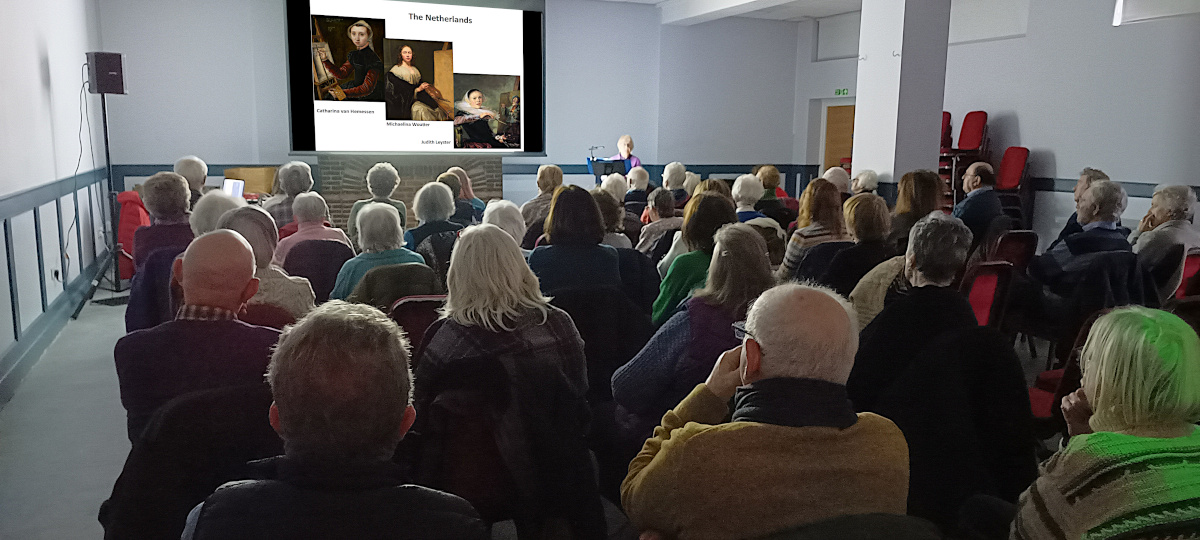Our Art History course continued on 24 January 2025 with three female artists from the Netherlands of the 18th Century, some of whom were new and some who had been featured in previous sessions. Jennifer guided us through the artists, their personal histories, where and how they acquired their skills, and some of their best know works.
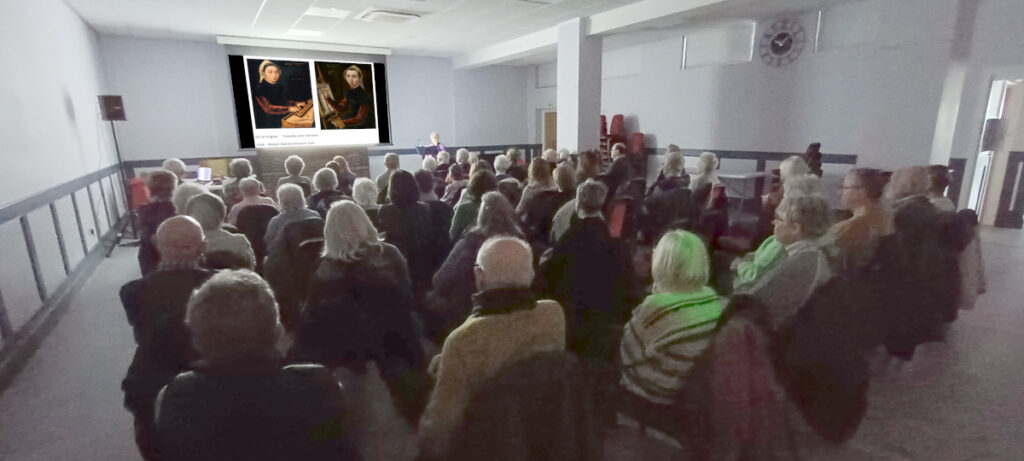
The three artists featured were Catharina van Hemessen, Michaelina Woutier and Judith Leyster (who we had met before). Pictured here, on the right is Catharina, whilst her sister Christina is playing the virginals on the left. Interestingly they appear to be wearing the same dress and the same cap! She had signed one of her paintings as Christina daughter of Johannis – and he was also a famous artist. There are twelve paintings with positive identifications as her work; 8 are portraits and 4 are religious studies. She was meticulous in signing her work. One of the religious paintings is shown below on the left where the cloth Christ has used to dry his face has his image ‘imprinted’ on the cloth – “Christ meets Veronica” (1541-1560). The other painting, The Lamentation (1550), demonstrates her ability to depict anatomy accurately.
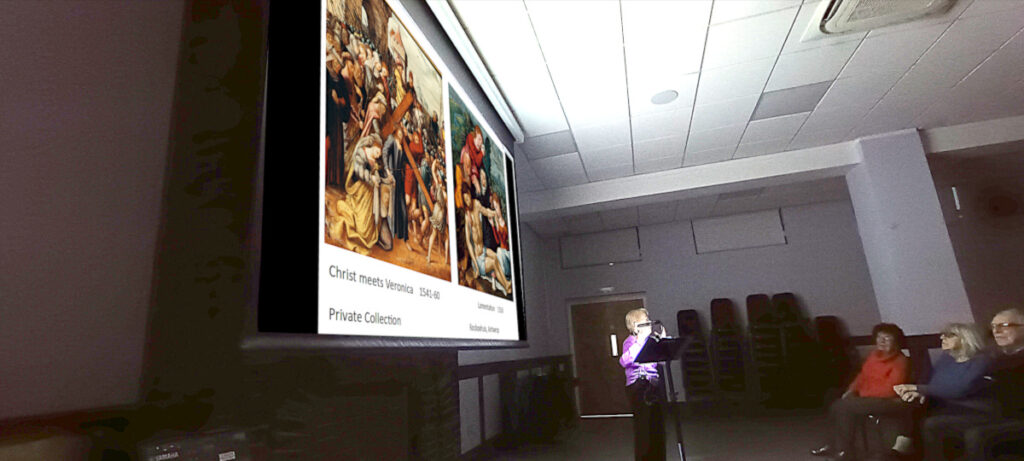
Catharina married the organist at the cathedral and was taken to Spain when Mary of Hungary retired from her post as Governor of the Hapsburg Netherlands. We then moved on to Michaelina Woutier who painted extremely life-like portraits, but few of them survive. Jennifer did show us a engraving that had been made of a portrait from 1643 that has since been lost. Rather than portraits, it is her still life work and her genre paintings for which she is best known.

We then progressed to Judith Leyster who we had met in the previous course on Dutch Art in the 17th and 18th Century. Judith was daughter of a brewer, and also carefully signed her works, but often in places that are hard to find. Her speciality was painting people enjoying their leisure, especially those making music, and there is no shortage of paintings with cats.
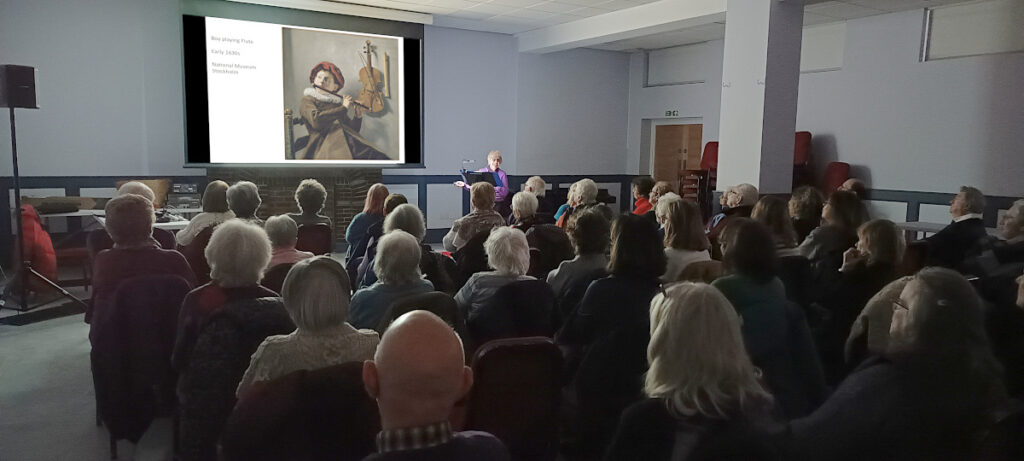
There are also many paintings showing young people seeking friendship and love in the places of refreshment in the Netherlands.
We then moved on, after a break for coffee, to a painting in the National Gallery for a detailed examination. This time it was the Arnolfini Portrait from 1434.
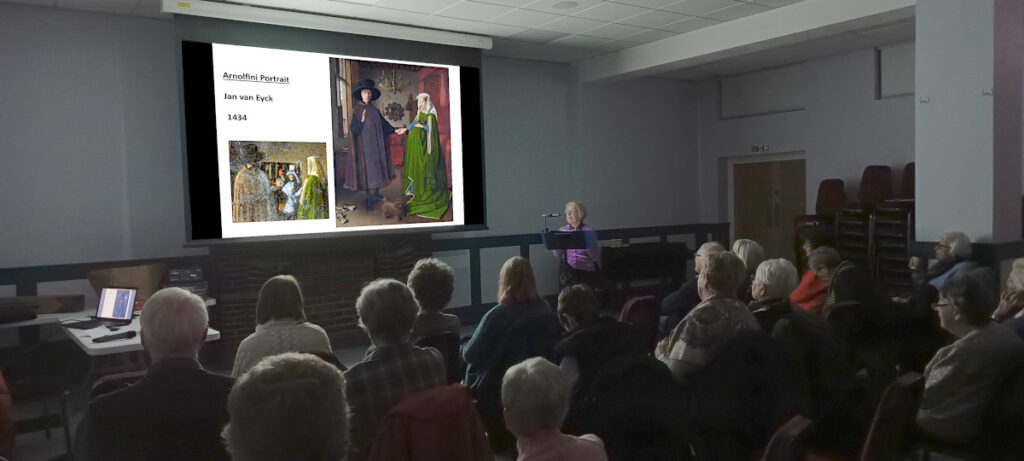
With many close up details, we were able to appreciate the wonderful skill of the artist Jan van Eyck, including the fact that there are two people in the portrait, they are shown full length, there is a detailed domestic interior, there is complex symbolism and the portrait influenced many painters who came along later. We even had a view of the painter at work in the mirror on the far wall of their room. Jennifer was also able to deal with the questions relating to whether or not the wife was pregnant, whether she had died when the portrait was painted, and the details of the items in the room. This is a truly fascinating work of art that can be see in the National Gallery.
Our next session will take place on 07 February 2025 at 10:00am in the Harrow Room.

